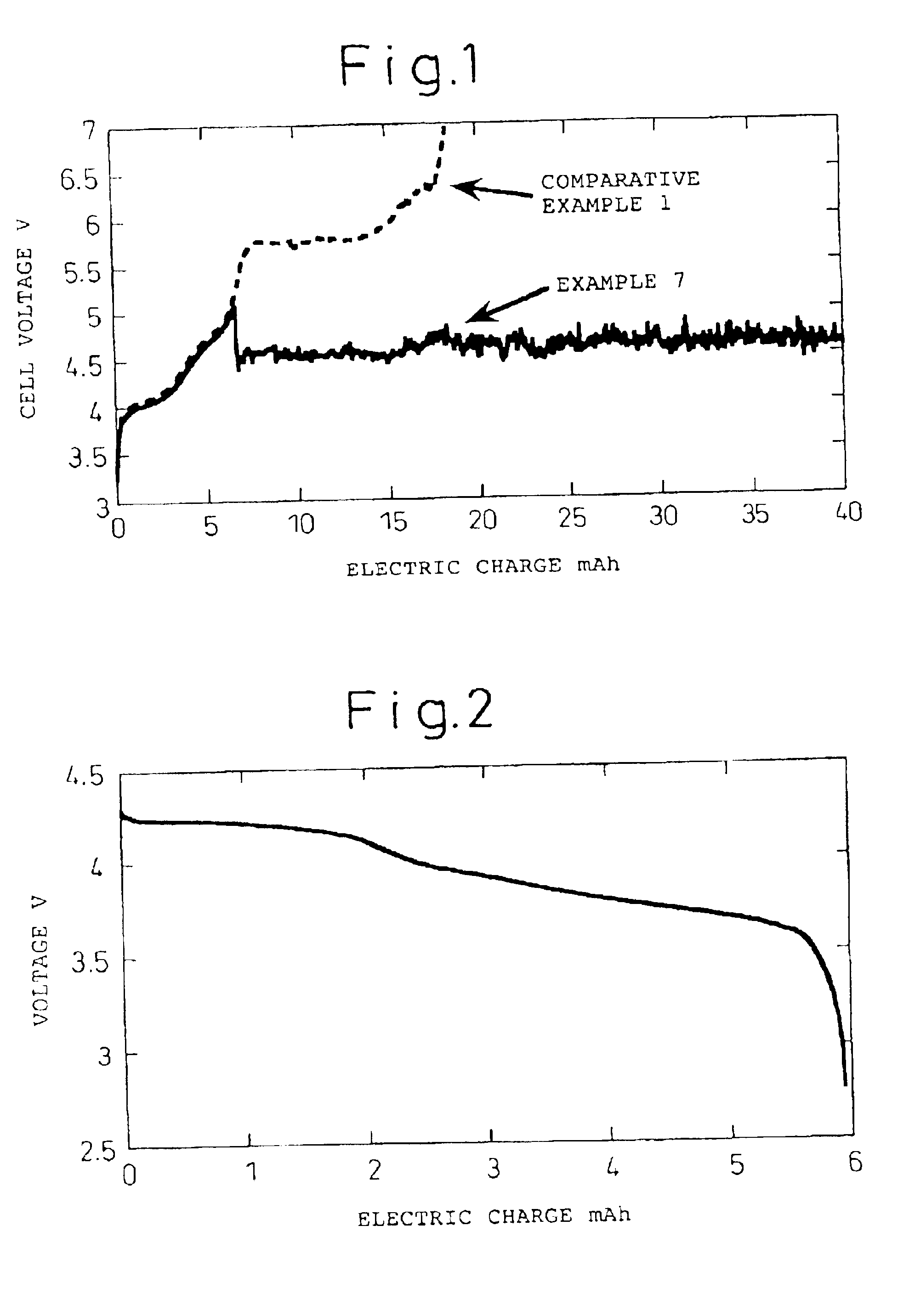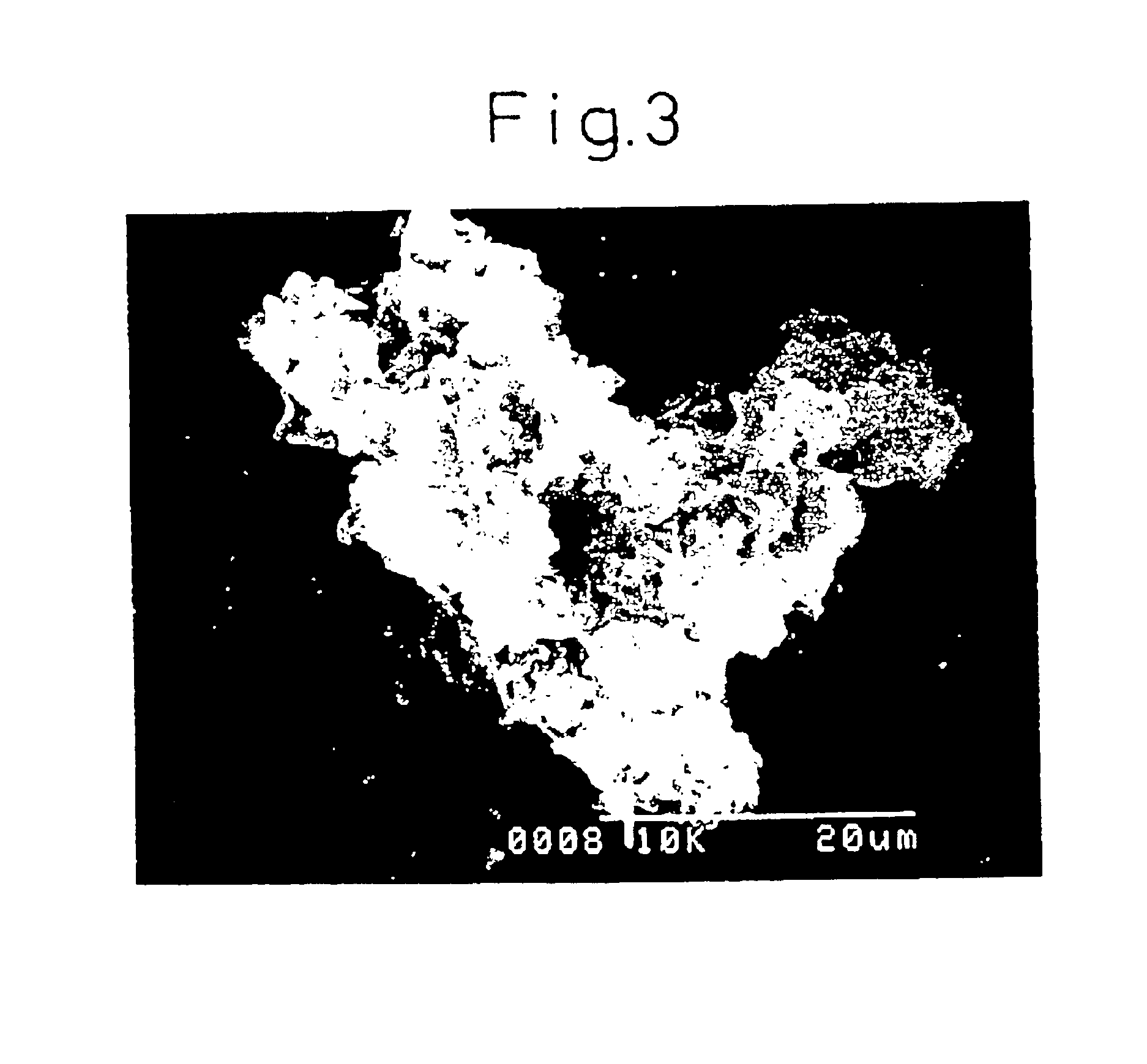Lithium secondary cell, separator, cell pack, and charging method
a secondary cell and separator technology, applied in the field of lithium secondary cells, separators, cell packs, and charging methods, can solve the problems of increasing the cost of non-aqueous secondary batteries, increasing the risk of combustion, and overcharging, so as to increase the safety of overcharging and reduce the cost
- Summary
- Abstract
- Description
- Claims
- Application Information
AI Technical Summary
Benefits of technology
Problems solved by technology
Method used
Image
Examples
example 1
Binder polyethylene terephthalate (PET) short fibers with a fineness of 0.22 dtex (average fiber diameter: approximately 4.5 .mu.m) were blended with oriented and crystallized PET short fibers with a fineness of 0.33 dtex (average fiber diameter: approximately 5.5 .mu.m) at a weight ratio of 4 / 6, and a film was formed to a basis weight of 12 g / m.sup.2 by a wet sheeting method and subjected to calender rolling at 200.degree. C., to obtain a nonwoven fabric sheet. The properties of the obtained sheet were as follows.
Average film thickness: 18 .mu.m, gas permeability: 0.07 seconds, normalized puncture strength: 5.0 g / .mu.m (90 g), MacMullin number: 5.0 (MacMullin number.times.film thickness value=90 .mu.m).
example 2
Numerous holes with a diameter of 2 .mu.m were opened evenly in a polypropylene (PP) fine porous film (CELGARD TM2400, product of Celgard Co.) using a needle. The properties of the obtained sheet were as follows.
Average film thickness: 25 .mu.m, basis weight: 13.5 g / m.sup.2, gas permeability: 80 seconds, normalized puncture strength: 12 g / .mu.m (300 g), MacMullin number: 5.8 (MacMullin number.times.film thickness value=145 .mu.m).
example 3
Binder PET short fibers with a fineness of 1.22 dtex (average fiber diameter: approximately 11 .mu.m) were blended with oriented and crystallized PET short fibers with a fineness of 0.55 dtex (average fiber diameter: approximately 7 .mu.m) at a weight ratio of 5 / 5, and a film was formed to a basis weight of 12 g / m.sup.2 by a wet sheeting method and subjected to calender rolling at 160.degree. C., to obtain a nonwoven fabric sheet. The properties of the obtained sheet were as follows.
Average film thickness: 18 .mu.m, gas permeability: 0.04 seconds, normalized puncture strength: 6.5 g / .mu.m (117 g), MacMullin number: 9.0 (MacMullin number.times.film thickness value=162 .mu.m).
A PvdF copolymer composed of VdF:HFP:CTFE=95.5:2.3:2.2 (molar ratio) was dissolved in a mixed solvent containing N,N-dimethylacetamide (DMAc) and polypropylene glycol (PPG) with an average molecular weight of 400 in a ratio of 6 / 4 (weight ratio) at 60.degree. C., to prepare a film-forming dope with a copolymer co...
PUM
| Property | Measurement | Unit |
|---|---|---|
| voltage | aaaaa | aaaaa |
| length | aaaaa | aaaaa |
| thickness | aaaaa | aaaaa |
Abstract
Description
Claims
Application Information
 Login to View More
Login to View More - R&D
- Intellectual Property
- Life Sciences
- Materials
- Tech Scout
- Unparalleled Data Quality
- Higher Quality Content
- 60% Fewer Hallucinations
Browse by: Latest US Patents, China's latest patents, Technical Efficacy Thesaurus, Application Domain, Technology Topic, Popular Technical Reports.
© 2025 PatSnap. All rights reserved.Legal|Privacy policy|Modern Slavery Act Transparency Statement|Sitemap|About US| Contact US: help@patsnap.com



